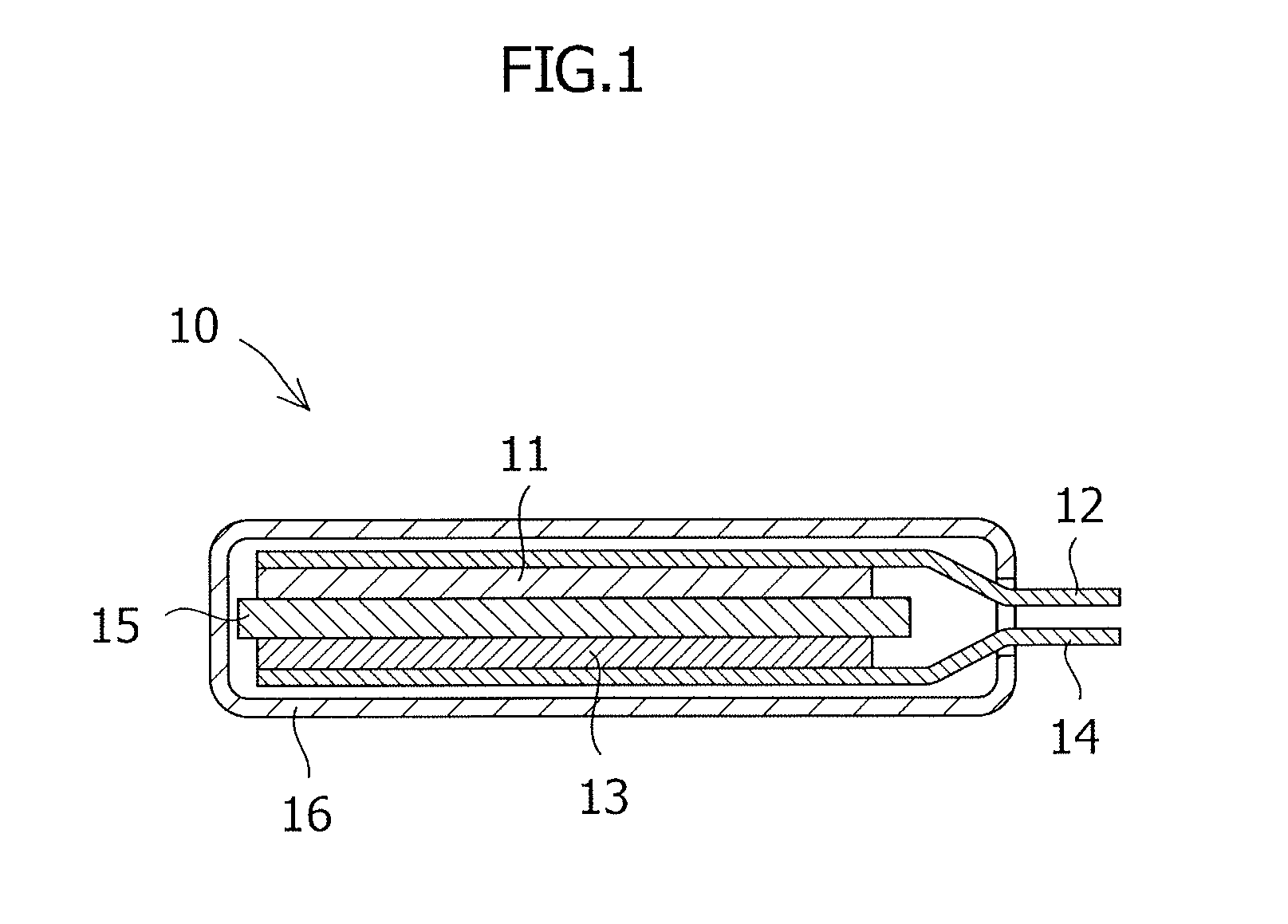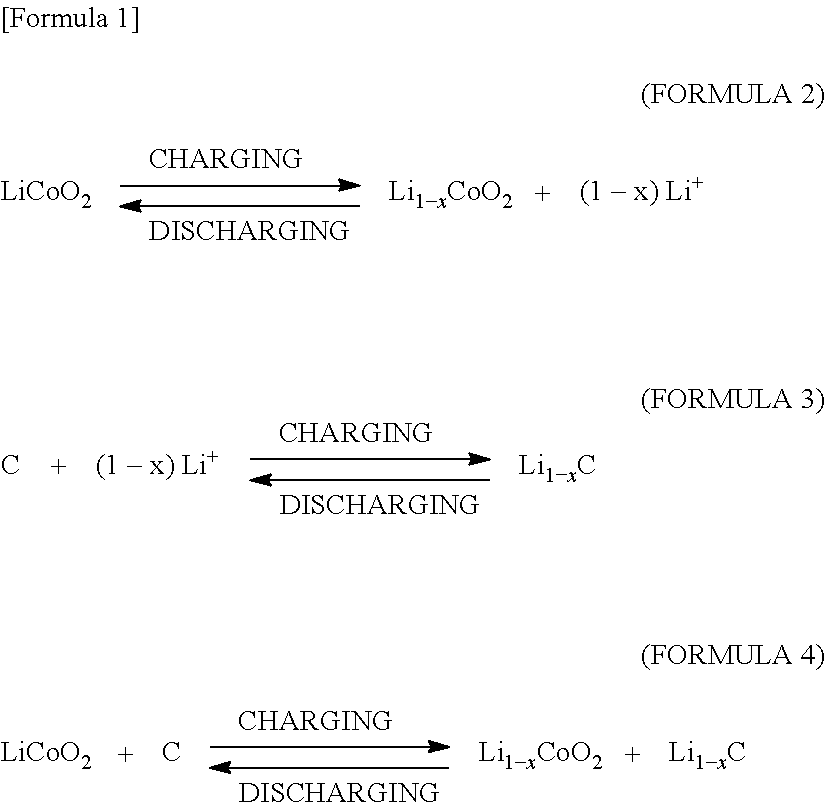Graphite material for a lithium ion secondary cell negative electrode, method of manufacturing same, and lithium ion secondary cell
a lithium ion secondary cell and negative electrode technology, applied in the field of graphite materials, can solve the problems of increasing the internal resistance of the cell, and the apparent cell capacity obtained at a predetermined current also decreases as the cycle progresses, and achieves the effect of high reliability characteristi
- Summary
- Abstract
- Description
- Claims
- Application Information
AI Technical Summary
Benefits of technology
Problems solved by technology
Method used
Image
Examples
examples
[0123]Hereinafter, the invention will be described more specifically based on examples and comparative examples, but the invention is not limited to the following examples.
[0124]1. Raw Coke and a Method of Manufacturing the Same
[0125](1) Raw Coke A
[0126]Hydrodesulfurized oil (sulfur content: 500 wt ppm, density at 15° C.: 0.88 g / cm3; this shall apply in the following examples) was fluid-catalytically cracked so as to obtain a fluid catalytic cracking decant oil. The same volume of n-heptane was added to and mixed with the obtained fluid catalytic cracking decant oil, the mixture was selectively extracted using dimethylformamide so as to divide into an aromatic content and a saturated content, the saturated content among the above was selectively extracted, and used as a saturated content extracted from the fluid catalytic cracking decant oil. In addition, hydrodesulfurized oil (sulfur content: 500 wt ppm, density at 15° C.: 0.88 g / cm3) was fluid-catalytically cracked in a high sever...
examples 10 and 11
[0180]The raw coke G was introduced into a rotary kiln, and carburized at 1400° C., thereby obtaining calcined coke. The obtained calcined coke was pulverized using a mechanical pulverizer (SUPER ROTOR MILL / made by Nisshin Engineering Inc.), and classified using a precision air classifier (TURBO CLASSIFIER / made by Nisshin Engineering Inc.), thereby obtaining carbon materials having average particle diameters of 12 μm (Example 10) and 6.0 μm (Example 11). These powders were injected into a crucible, installed in an electric furnace, and graphitized in a nitrogen gas flow of 80 L / minute at a highest temperature of 2800° C. At this time, the temperature increase rate was set to 200° C. / hour, the highest temperature retention time was set to 3 hours, and the powders were cooled to 1000° C. at a temperature decrease rate of 100° C. / hour, and then cooled to room temperature in the air in a state in which the nitrogen flow was held, thereby obtaining a graphite material. The average partic...
PUM
| Property | Measurement | Unit |
|---|---|---|
| crystallite size | aaaaa | aaaaa |
| temperature | aaaaa | aaaaa |
| temperature | aaaaa | aaaaa |
Abstract
Description
Claims
Application Information
 Login to View More
Login to View More - R&D
- Intellectual Property
- Life Sciences
- Materials
- Tech Scout
- Unparalleled Data Quality
- Higher Quality Content
- 60% Fewer Hallucinations
Browse by: Latest US Patents, China's latest patents, Technical Efficacy Thesaurus, Application Domain, Technology Topic, Popular Technical Reports.
© 2025 PatSnap. All rights reserved.Legal|Privacy policy|Modern Slavery Act Transparency Statement|Sitemap|About US| Contact US: help@patsnap.com



